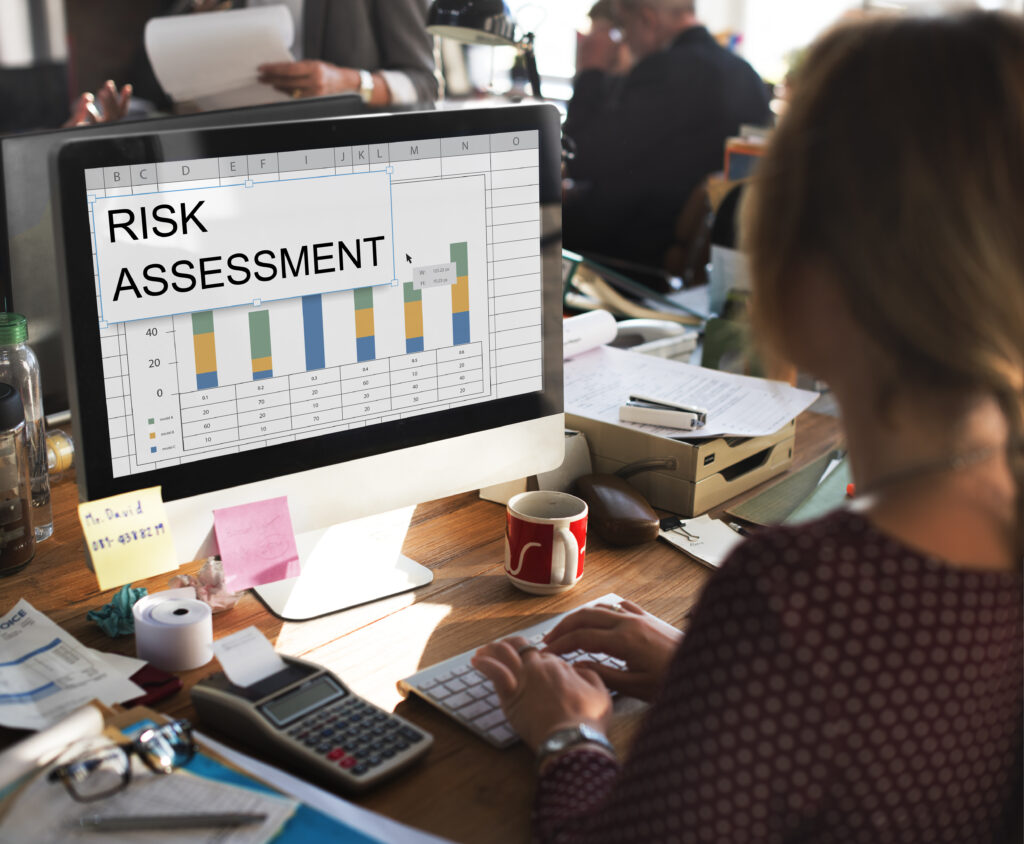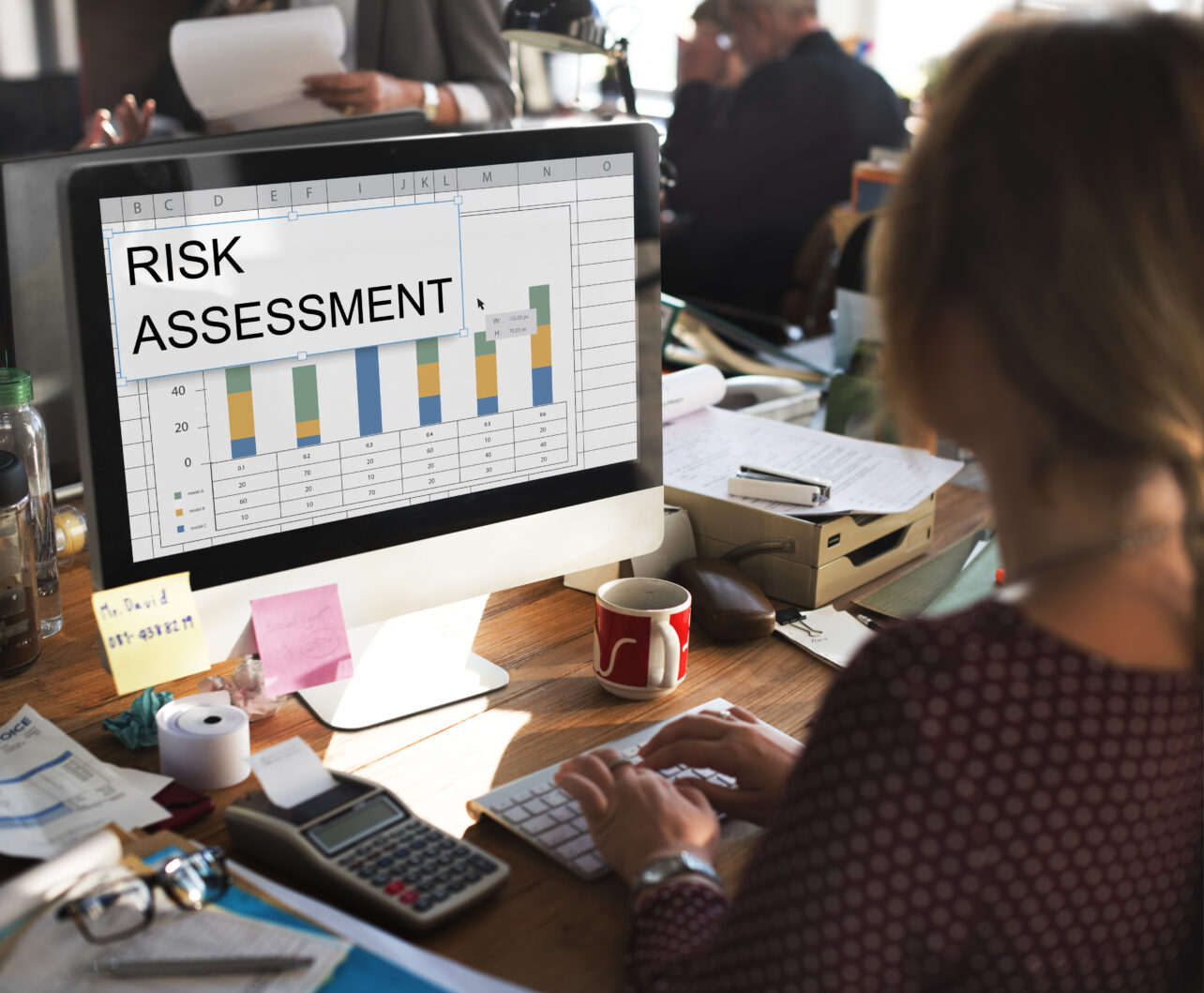To build a safe and compliant workplace, you must first understand your risks. That’s where a risk assessment comes in.

Whether you’re managing a construction site, office, lab, or warehouse, knowing how to conduct a risk assessment in 5 steps will help you prevent accidents before they happen.

This essential guide breaks down the process so you can assess hazards confidently, comply with health and safety legislation, and foster a strong safety culture.
Conduct a Risk Assessment
✅ What Is a Risk Assessment?
A risk assessment is a systematic process used to identify hazards, analyze potential consequences, and determine control measures to reduce risk. It’s a legal requirement under OHSA, OSHA, and many international safety standards.

Key goals:
- Prevent workplace injuries and illnesses
- Reduce downtime, fines, and liability
- Protect workers, equipment, and the environment
🛠️ Step 1: Identify the Hazards
The first step in any risk assessment is to find all potential hazards in the work environment. A hazard is anything with the potential to cause harm.
Types of hazards include:
- Physical – machinery, noise, sharp objects
- Chemical – fumes, solvents, flammable liquids
- Biological – viruses, bacteria, mold
- Ergonomic – repetitive motion, poor posture
- Psychosocial – stress, harassment, fatigue
How to identify them:
- Walkthrough inspections
- Reviewing incident and near-miss reports
- Speaking to employees and supervisors
- Examining equipment, processes, and materials
- Using checklists tailored to your industry
Internal link: Read our full article on Workplace Hazard Assessment
📊 Step 2: Assess the Risks
Next, evaluate the level of risk associated with each hazard.
Consider:
- Likelihood: How probable is it that harm will occur?
- Severity: If it happens, how serious would the outcome be?
Use a risk matrix to assign a rating:
| Risk Level | Action Required |
|---|---|
| High | Immediate action required |
| Medium | Control measures needed soon |
| Low | Monitor and maintain controls |
Example:
- Spilled liquid in a walkway = High risk (likely + serious injury)
- Loud noise in a closed room = Medium risk (moderate + over time)
🧰 Step 3: Decide on Control Measures
Once you’ve assessed each risk, identify the best way to eliminate or reduce the hazard.
Use the Hierarchy of Controls:
- Elimination – Remove the hazard completely
- Substitution – Replace it with something safer
- Engineering Controls – Isolate people from the hazard
- Administrative Controls – Change how people work
- Personal Protective Equipment (PPE) – Last line of defense
Example:
- Noise hazard: Substitute loud equipment (Step 2), enclose machinery (Step 3), schedule shorter shifts (Step 4), provide hearing protection (Step 5)
Make sure control measures are:
- Practical
- Cost-effective
- Acceptable to workers
📝 Step 4: Record and Communicate the Findings
In Canada and most jurisdictions, employers must document risk assessments when:
- Required by law
- The workplace has 5 or more employees
- High-risk work is performed
Your risk assessment record should include:
- Description of each hazard
- Risk rating (before and after controls)
- Control measures applied
- Persons responsible for implementation
- Date and review schedule
Communicate this to all staff during safety meetings, onboarding, and through signage or digital platforms.
🔁 Step 5: Review and Update Regularly
A risk assessment is not a one-time task. Reassess when:
- New equipment, chemicals, or processes are introduced
- An incident or near-miss occurs
- Regulations change
- Renovations or layout changes occur
- At least once annually
Set calendar reminders or use digital safety software for automatic scheduling and version control.

🧠 Bonus Tip: Involve Your Team
Include employees in walkthroughs, brainstorming, and reviewing risks—they’re your best source of practical knowledge. Their involvement increases compliance and builds safety ownership.
✅ Risk Assessment Checklist
| ✅ Task | 📍 Status |
|---|---|
| Walked through and identified hazards | ✔ |
| Assessed risk level and severity | ✔ |
| Selected control measures | ✔ |
| Documented and shared results | ✔ |
| Set review dates | ✔ |
To maintain a safe workplace, you need to conduct a risk assessment consistently and strategically. This 5-step method—identify, assess, control, record, and review—keeps your team protected and your operations compliant.
Make this a regular habit, not a one-time fix. Safety isn’t just about responding to incidents—it’s about preventing them before they happen.


No comments yet